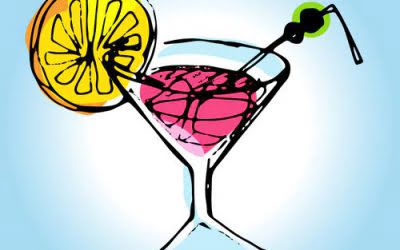Naltrexone Hydrochloride Tablets naltrexone hydrochloride: Side Effects, Uses, Dosage, Interactions, Warnings
You may inadvertently perceive these withdrawal symptoms as side effects of naltrexone. If you start treatment with naltrexone while in withdrawal, you may have a difficult time distinguishing withdrawal symptoms of other substances from naltrexone side effects. If any of these symptoms occur, medical attention should be sought immediately. To minimize risks, healthcare providers often perform liver function tests before starting Naltrexone and periodically during treatment.
Allergic Reaction
These side effects typically subside within one or two weeks at most. For some people, these initial side effects may persist longer than usual. It’s essential not to panic if you find yourself experiencing them beyond the first few days. Understanding the duration of potential side effects is crucial when taking any medication. The LDN side effects may be minimal compared to those of higher doses.
- During and after treatment with naltrexone, your body will likely be more sensitive to opioids.
- Discover common Naltrexone side effects, how they may impact recovery, and effective ways to manage them for a safer, more comfortable treatment experience.
- According to experts at the National MS Society, more substantial clinical trials are needed to confirm LDN’s effectiveness for treating multiple sclerosis.
- In fact, naltrexone is an opioid antagonist, meaning it binds to opioid receptors in the brain, blocking the effect of opioids.
Does naltrexone help with alcohol cravings?

It can help with treating opioid addiction and alcohol use disorder. However, Naltrexone, like any other medication, can come with side effects. Unlike its high-dose counterpart, LDN doesn’t block opioid receptors entirely. Instead, it temporarily binds to them, leading to a rebound effect. This boosts the body’s natural production of endorphins, your body’s “feel-good” chemicals that help regulate sensations of pain and immune Halfway house function.
- In many cases, side effects such as dizziness and digestive problems go away within a few hours to days of starting naltrexone treatment.
- We’ve also partnered with Moderation Management, a non-profit dedicated to reducing the harm caused by the misuse of alcohol.
- However, people should avoid all opioids and even cough syrup with codeine if they are taking naltrexone for alcohol use disorder because it can precipitate unpleasant opioid withdrawal.
- Monitor for mood changes and seek medical advice if depression worsens.
How long do naltrexone side effects last?

At low doses among individuals that aren’t withdrawing from any medications, chills may not be extreme. Most would consider chills to be a very naltrexone side effects rare side effect of naltrexone, but one that could occur. Some may also speculate that if naltrexone causes some users to sweat more than usual, this increased sweating may contribute partially to the chills. Assuming emetic reactions to the medication are an issue, administration of an antiemetic agent may be useful for reducing nausea, and ultimately appetite.
- If your headache is slowly becoming bothersome, talk to an expert about the potential solutions to keep it under control.
- Do not take naltrexone in order to drive or perform other activities while under the influence of alcohol.
- If your dose is different, do not change it unless your doctor tells you to do so.
- If any side effects of LDN last for months or are severe, consult a doctor for dosage adjustment and other alternative solutions.
- This condition is also known as alcohol dependence or alcoholism.
Assuming allergic reactions to naltrexone are ruled out, the body may eventually adjust to the drug and vomiting may diminish. In the meantime, an antiemetic adjunct may prevent vomiting and reduce likelihood of concurrent nausea. Feeling irritable all the time can make life less pleasurable and interfere with social relationships. You may want to also consider that irritability may be a result of recently discontinuing alcohol or opioids.
Symptoms of overdose may include:
If a person and their medical team agree to use naltrexone as part of a treatment plan for OUD, the person must be opioid free for at least 7-10 days before starting naltrexone. This is because naltrexone will bind to the opioid receptors and block all opioids that are already in the body, causing a precipitated opioid withdrawal or rapid withdrawal. Even if a person is on methadone for opioid use disorder, they will have to taper off methadone and be opioid free before starting naltrexone, since methadone is an opioid. Because of this, many treatment providers will test for opioids using a urine drug screen.














